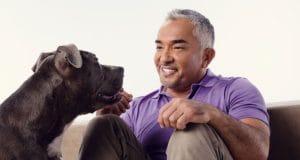In a lot of the world, this time of year seems to be dedicated to eating. Sure, there are lots of occasions happening between now and 2017, but most of those apparently serve double duty, with a civil or religious celebration wrapped around a meal, or at least a lot of snacking.
We have Halloween candy, the Thanksgiving feast, a seemingly endless parade of seasonal cookies, candy, and pies, and one holiday party after another. If you work in an office, brace yourselves for the candy bowls and gift baskets popping up everywhere — and for the extra pounds it will be very hard to avoid putting on and which will serve as a reminder of the season in the spring.
You can make it through if you have self-control, but imagine what it must be like if you don’t. And then imagine having no self-control but getting these holiday banquets offered for free, every single day.
This is exactly what some of us subject our dogs to when we don’t have the will power to resist their cuteness, or wind up using food as a reward. A dog will keep eating as long as they can while the food and treats keep coming, and they will hoard whatever they can’t eat. That’s just instinct, bred into a species that, in the wild, is never sure when or from where its next meal is coming.
Unlike humans, though, dogs have no concept of gaining weight, or whether they’re fat or skinny. Even if a dog can barely waddle because he’s overweight, that dog is not going to connect how much he eats to his difficulty moving around.
It’s up to us, the human Pack Leaders, to make sure that our dogs maintain a healthy weight, and this week’s National Pet Obesity Awareness Day is a good excuse to give you some pointers on how to know whether your dog is overweight, and how and why to fix it.
Is my dog obese?
Figuring out whether your dog is over- or underweight is fairly straightforward. You just need to determine their body condition score, which you can do by observing your dog’s belly and ribs and feeling her back and sides, then comparing that to the standards on the scale.
In 2015, 53.8% of dogs in the U.S. were overweight or obese. This was an increase just over a percentage point from the year before, and the 2015 study also showed that the number of obese dogs had increased in each of the previous seven years, with the fattest pets getting even fatter, leading to the expansion of the category “super-obese.”
So there’s a better than fair chance that your dog does need to lose a little weight…
Getting Your Dog Healthy
Here are a few steps to take to help your dog trim down to a healthy weight:
- Get their diet under control
Consult with your dog’s vet to determine his nutritional needs, then take feeding guidelines seriously. When feeding your dog, don’t estimate. Know the exact amount he’s supposed to eat for each meal, then use a measuring cup or digital scale.
- Eat less, more often
Feed your dog several times throughout the day instead of all at once, and try to feed her at the same times every day. This will help your dog to not feel hungry, as well as reduce anxiety about when her next meal is coming, so make her calmer about food in general. Snack healthier
Calories don’t just affect human weight, and dog snacks have calories, too. If your dog is overweight, consider changing to snacks that have fewer calories or find a treat replacement that isn’t edible — for example, if your dog has a favorite toy, occasionally use that instead of food as a reward.Train everyone in the pack
It’s very easy to fall into the habit of giving our dogs handouts from the table or treats and snacks all the time, especially if it’s part of a training routine. This is why it’s so important for everyone to be on the same page when your dog is losing weight. All the dieting in the world won’t help if someone is slipping your dog human food on the sly.
Exercise, exercise, exercise
Of course you still need discipline and affection, but exercise comes first. Not only is it your best tool for having a calm and balanced dog, it’s the best way to keep your dog fit and healthy — with the side benefit of being good for you, too. And what more enjoyable way could there be for you and your dog to lose weight and get healthier than to walk together? Create a walking schedule for the two of you and stick to it.
As with humans, obesity isn’t just a statistic. It can create all of the same problems in dogs, from joint pain to diabetes to heart disease, all of which can greatly diminish the quality of life or even cut a dog’s life short. As a Pack Leader, it’s your job to provide protection and direction. If Fido is getting flabby, you owe it to him to help him get in shape.
Stay calm, and keep your dog fit!











